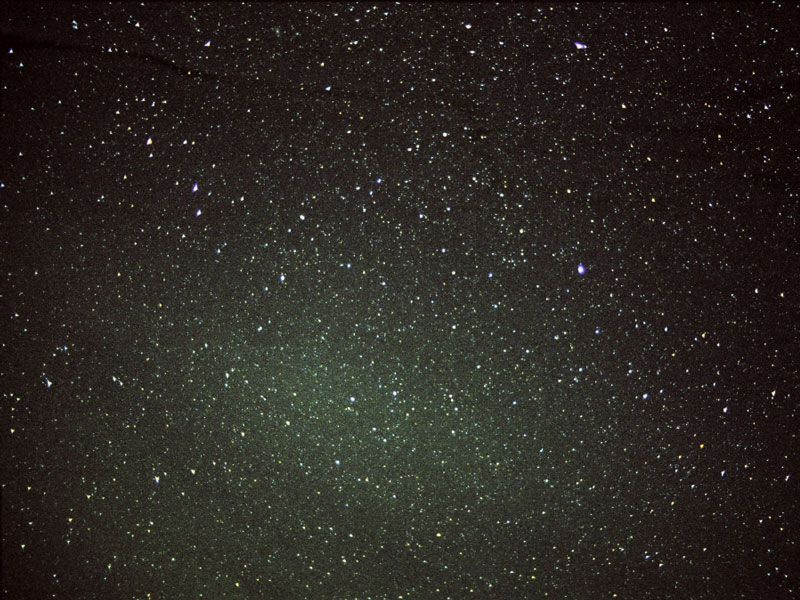Credit & Copyright: Jimmy Westlake
(Colorado
Mountain College)
Explanation:
If you look carefully enough, you can even see the glow of the
Sun in the opposite direction.
At night this glow is known as
the gegenschein (German for "counter glow"),
and can be seen as a faint glow in an extremely dark sky.
The gegenschein is sunlight back-scattered off small interplanetary
dust particles.
These dust particles are millimeter sized splinters from
asteroids and orbit in the
ecliptic plane of the planets.
Pictured above, the gegenschein is seen superposed toward the constellation of Pisces.
The gegenschein
is distinguished from zodiacal light by the
high angle of reflection.
During the day, a phenomenon similar to
the
gegenschien called the glory can
be seen in reflecting air or clouds opposite the Sun from an airplane.
APOD Editor to Discuss "Best of APOD
2006" Pictures in NYC on January 5
1999 2000 2001 2002 2003 2004 2005 2006 2007 2008 2009 2010 2011 2012 2013 2014 2015 2016 2017 2018 2019 2020 2021 2022 2023 2024 2025 |
Yanvar' Fevral' Mart Aprel' Mai Iyun' Iyul' Avgust Sentyabr' Oktyabr' Noyabr' Dekabr' |
NASA Web Site Statements, Warnings, and Disclaimers
NASA Official: Jay Norris. Specific rights apply.
A service of: LHEA at NASA / GSFC
& Michigan Tech. U.
|
Publikacii s klyuchevymi slovami:
Sun - ecliptic - Solnce - Ekliptika
Publikacii so slovami: Sun - ecliptic - Solnce - Ekliptika | |
Sm. takzhe:
Vse publikacii na tu zhe temu >> | |
